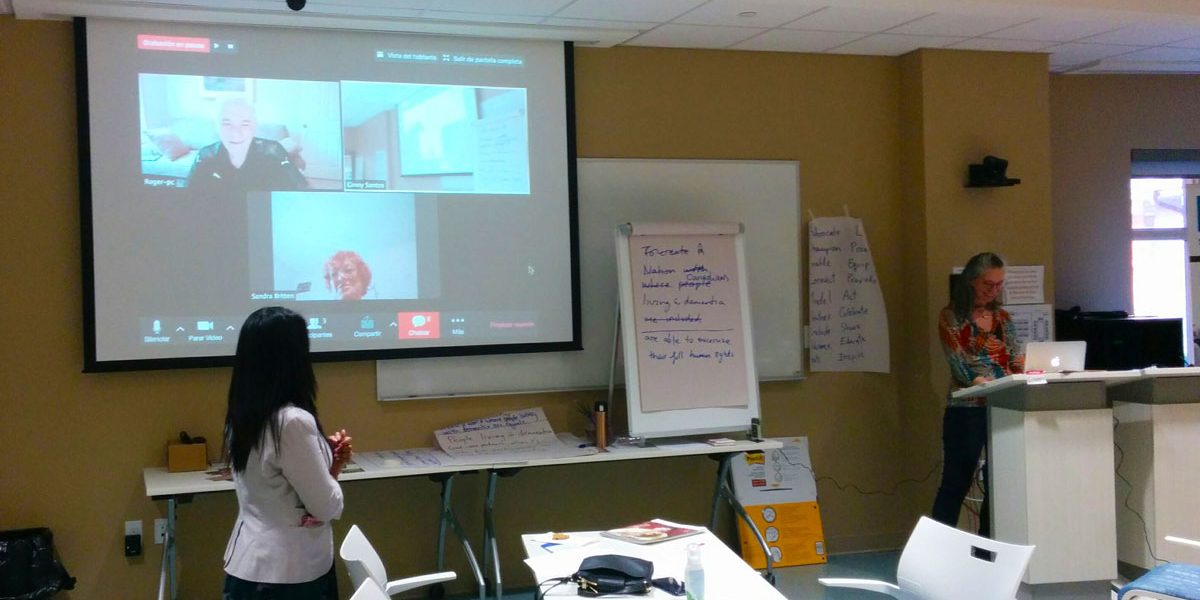Imagine that you have been invited to a planning meeting.
It’s a virtual meeting, also known as a video conference, an online meeting, a Zoom Call, a Skype meeting, WebEx, etc., etc.
The invite is on your calendar, you know the date, time and location. You even know who else has been invited. Based on the meeting title, you assume that you understand the purpose of the meeting.
You show up for the meeting on time but wish you hadn’t bothered; the first ten minutes are spent waiting for late arrivals, figuring out who can hear whom, helping those with technical difficulties, and making polite small talk with those whose mics are working.
Someone finally takes the lead and the meeting begins. They share their screen and show some PowerPoint slides. They give an update and ask a question. There is a moment of awkward silence as everyone hesitates to answer, not knowing if someone else is about to speak up. When you do say something, you quickly realize that no one can hear you because your mic is muted.
Someone else doesn’t have that issue though; they forgot to mute themselves and you hear the tap tap of a keyboard; are they checking their email? Chatting with someone on the side?
Two people finally manage to get their comments heard. A few more updates are given. You notice an important email notification coming in. You click on it and lose focus on the meeting. Another hour wasted.
The above scenario happens to most everyone who organizes, leads or participates in a virtual meeting. In fact, one could say it’s the status quo.
But it doesn’t have to be.
If you’re in charge of arranging virtual meetings, here are 5 tips for virtual meetings that will help you avoid wasting anyone’s time.
Set clear expectations:
Not only do meeting invitees need to know the date, time and location of the meeting, they also need to know why they have been invited and what role they will play. When each participant knows the purpose of the meeting and how they can contribute to reaching the meeting outcomes, they will be better prepared and engaged in the meeting. They are more likely to join from an appropriate work space (rather than from their car or a noisy coffee shop, or while walking down the street).
Setting clear expectations can also discourage multitasking. Research from neuroscience shows that multitasking is not possible; it’s a myth. What we are really doing is frequent task-switching, which impacts our ability to truly focus and contribute our best thoughts, ideas and knowledge. During virtual meetings, it’s way too tempting to multitask. That’s why it is so important that participants understand the purpose of the meeting, have a real reason for attending and an expectation that they be one hundred percent present.
Help everyone arrive on time with their full body, mind, eyes and ears:
One huge benefit of video conferencing is that you can both see AND hear the participants. Being able to see everyone live makes a real difference in everyone’s ability to collaborate, listen and feel heard. This requires that everyone have the correct set up and is able to join by video from a computer with a good internet connection (and not just a phone).
Invite participants to join 15 minutes early to test their sound and video and make sure they are ready to roll. Once everyone has done this a few times, it will no longer be necessary. But if a new person is joining your virtual meeting, be sure to ask them to join 15 minutes early so that you can help them troubleshoot.
Think of it this way: if you like to be on time to in-person meetings, and you were going to a new building where you had never been before, you would give yourself some extra time to find parking, make your way to the elevators or find the meeting room. Why not do the same when joining a new virtual meeting? If you are already in the habit of having productive virtual meetings, and you are joining from the same computer as usual and the meeting is on the same app as usual, then there’s no need to arrive early.
Otherwise, plan for the unexpected.
Heighten Anticipation:
There’s a big difference between logging into a meeting that you know very little about and logging into a meeting that you know has been well-planned and is purposeful. People like to feel useful and needed. Make it clear that their input is needed and be specific about why. Will you be asking for their expertise on a particular question, their updates, their ideas or opinions?
The more specific you can be about why they are on the invitee list, the more genuinely committed they will be to the meeting. If they know that they are not just joining as passive participants, they are much more likely to look forward to it and come prepared.
Develop good virtual manners:
Until good virtual manners become second nature, you have to establish some ground rules. Start your virtual meeting with a list of guidelines. Depending on who you are meeting with, your list can include some humor, but here are a few requests you don’t want to skip over:
- We’d rather see your eyes, not just your forehead.
- Put up your hand when you want to speak (many video conference tools have a button for this). As the meeting organizer, you can help participants take turns by calling out the name of the next person to speak.
- We’d rather have your full presence (not just your headshot). Please turn on your webcam and turn off notifications and distractions.
- Having a light behind your camera will ensure we can see your facial expressions and not just your shadow or silhouette.
- Use the chat feature to let everyone know if you need to slip out early.
- If you have more than five attendees, it’s a good idea to mute everyone and unmute participants as needed.
Plan to engage and interact:
Remember that you are inviting people to a productive meeting, not a webinar or presentation.
Plan how you will engage participants and maximize the opportunities for them to contribute to each item on the agenda. This can be done best when you compliment the video conference with an online collaborative workspace. Think of it this way: if you were in the same room, you might use flip chart paper or a whiteboard to work together. You might split into smaller groups for specific discussions or you might take turns projecting various PowerPoints or reports.
Most video conference applications allow you to do all of the above; you just have to know how to put them to best use. For example, Zoom has breakout rooms, a chat box, polls, and the ability to share multiple screens.
If someone is going to share a screen make sure their presentation time is limited in order to open space for conversation.
I have yet to find a video conference tool with a built in collaborative brainstorming and decision-making tool, so I use a tool called Stormz for strategic collaboration during video conferences.
Virtual Meetings are Productive Meetings
The fact is, you can accomplish as much on a video call as a live meeting if you’re organized.
If you don’t have the time and expertise to run productive online meetings, consider hiring a facilitator, getting trained as a digital facilitator or even consulting with an expert on how to make your virtual meetings more productive.
Discover digital facilitation for virtual meetings with a 30-minute online demo! Contact us to book your demo or find out how you can be trained as a digital facilitator.







